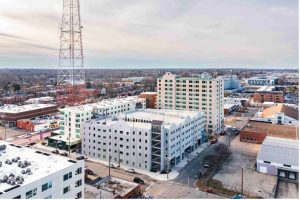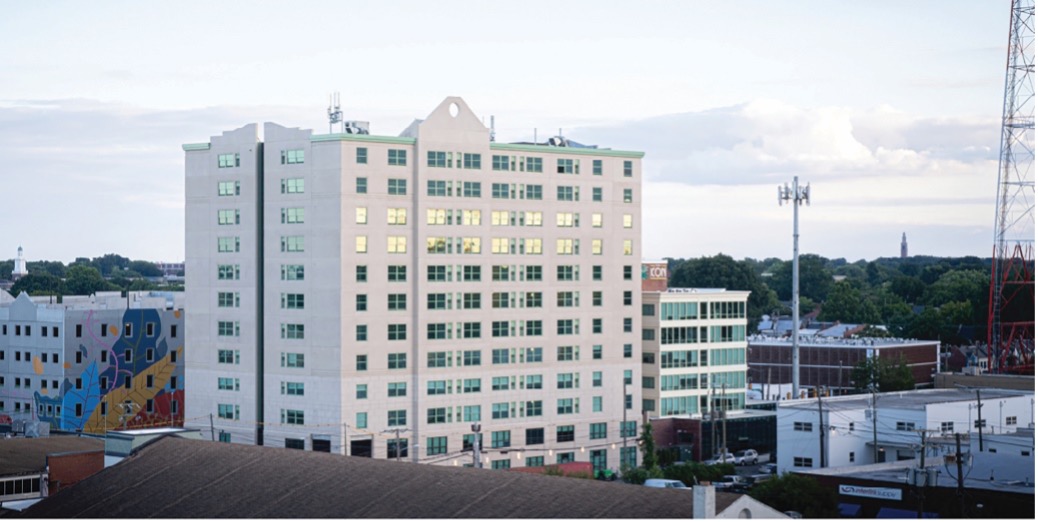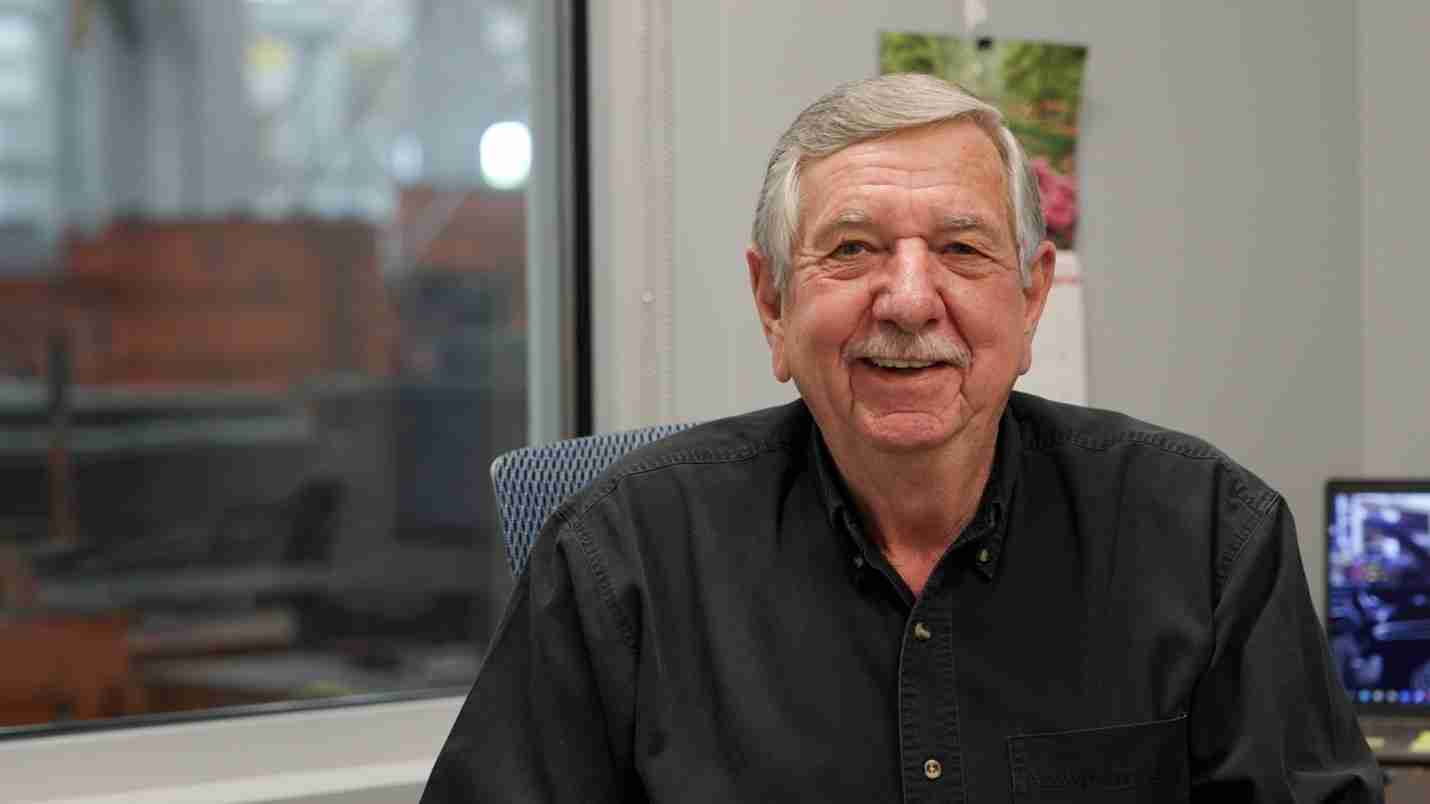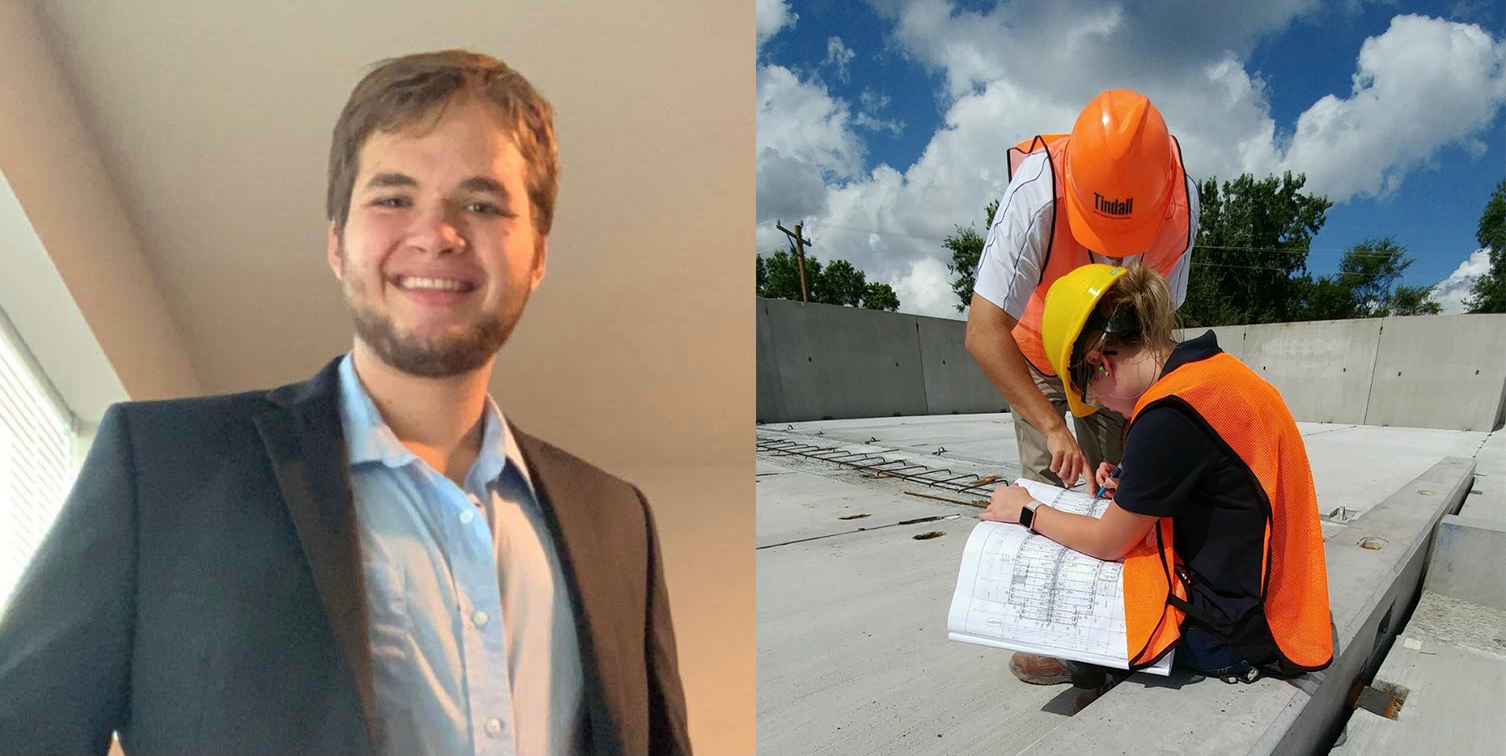Since opening in 1988, Tindall’s Virginia location has taken on some awe-inspiring projects. Among them is The Icon Apartment building — a majestic 12-story multifamily tower nestled in the heart of Richmond, Virginia. The sprawling 163,000-square-foot edifice accommodates 189 apartments and serves not just as a testament to Tindall’s abilities but as a significant milestone for the company.
To better understand what made The Icon unique among precast concrete apartment buildings, we spoke with Chris Andrews, the project’s Sales Engineer. Andrews was instrumental in bringing the vision for The Icon to fruition, and his insights provided a valuable glimpse into the intricacies of the project.
Tell us a little about yourself.
My name is Chris Andrews, and I am a Sales Manager at Tindall Corporation’s Virginia Division. I started with Tindall about 18 years ago as a Design Engineer for five years and transitioned into direct sales and the Sales Manager role over the last 13 years.

Were you always interested in concrete buildings?
I am not sure it was always concrete. I think it started more with plastic LEGOs and wood blocks. But as a kid, I definitely had an interest in building structures for my Transformers and Micro Machines! I recall my parents saying I should be an architect when I got older because I had a bit of an obsession with building different structures out of whatever was lying around. So, while I didn’t go the architect route, I did still find my way into the building industry.
What can you tell us about The Icon? How did Tindall get involved?
Back in 2012, Virginia’s Governor signed a couple of laws supporting in-state craft breweries, which led to a craft beer boom in downtown Richmond. With the new blue laws in place, new craft startups were looking for inexpensive places in Richmond to get started, and in turn, Scott’s Addition became a hot spot for microbrewery development. The area was inexpensive at the time, and young people started flocking to the neighborhood.
As such, a developer was building a pair of 7–8 story apartment complexes designed to accommodate growth in the neighborhood, and they hired us to create a parking structure for them. It was a relatively straightforward project for us, but it was one of the first structural precast projects this developer had been a part of. They loved it. They loved the design and the durability and were happy with the final project.
A few blocks over, they were looking at renovating a property — The Icon. At the time, that block, in particular, was kind of rough, and several companies in the past had tried to revitalize it, but no one had been able to make it work. This developer, though, decided to take it over and hired us again to build a parking structure on that block.
During the design process of the garage, they asked if we could build an apartment building utilizing similar concepts. And that began discussions with them about how we could use precast to help construct this new apartment building.

What was your role in The Icon Apartments?
I was the Sales Engineer for The Icon, meaning I was the main point of contact for virtually everything on the preconstruction side. When we were brought onto the project, I worked with the client to iterate and problem-solve, and I acted as the liaison between each of our teams as we progressed through the project.
What made The Icon a unique project for Tindall?
The Icon was the first mid-rise total precast apartment building we’d ever done. Throughout Tindall’s history, we had built all sorts of total precast residential buildings – offices, dorms, barracks, etc. – but we had never built a 12-story apartment building. We wanted to expand and take on new challenges, and the entire SWA and Tindall teams figured out how to make it happen.
What also made it possible was T-SLAB®. When the client was initially working on converting The Icon, we were starting up with T-SLAB (Tindall Superior Lightweight All-Purpose Beam), so we worked that into our initial framing design, and it became an integral part of The Icon’s development from start to finish.
What made T-SLAB® such an important part of The Icon?
T-SLAB was integral from a handful of perspectives. From an efficiency standpoint, T-SLAB helped save us a tremendous amount of time during construction. As with all our projects, precast allows most of the construction time to be completed offsite, at our manufacturing facility, in turn drastically reducing the amount of time we are on site. T-SLAB is also engineered to not require a structural CIP topping, only needing a leveling compound in its final state, which saved the clients considerable time and money. Because of T-SLAB’s design, we can also omit sections of the lightweight concrete blocks and allow for room to accommodate MEP components or additional reinforcement where needed. It requires more effort on the front end, but it speeds up construction significantly because other trades can get in and install their components without worrying if and where their access will be.
Also, precast structures are typically erected vertically in sections, whereas T-SLAB allowed us to build The Icon in more of a level-by-level method. We were able to get the slabs down on each level sooner, which allowed other trades earlier access, ensuring construction could progress more quickly and we could stay ahead of schedule.
Economically, we probably wouldn’t have been able to make The Icon work without T-SLAB.
Were there any other technologies or techniques used in The Icon that are worth highlighting?
A challenge we faced from a design perspective was maintaining an open interior, which limited our shear wall usage. Due to the unique floor layout and open concept, the shear resistance methods we typically use were ineffective for this situation to achieve the level of shear resistance needed for a 12-story building.
Our solution was to use 10.5-feet tall, single-piece, monolithic boxes that Tindall Infrastructure had developed for the stair tower construction. We brought the boxes to Virginia from our sister plant in South Carolina and integrated them into our design. These functioned as a core part of our shear resistance system and contributed tremendously to the shear capacity of the building.
You mentioned a design challenge. Were there any other challenges you faced during this project?
Yes, a few. From a preconstruction side, having numerous design and layout iterations were one of the more challenging parts of the process. Initially, the developer was looking at a traditional steel system for The Icon, and while they were excited to pull us in for consideration, they weren’t sold on our solution immediately. But, they kept us in the conversation and had us work alongside their team to update drawings and room layouts as their plans evolved. Every time they made a tweak, they’d send it over, and we would update ours to match. We were learning as we went and had to go through a lot of back and forth to find the most efficient solution, but we made it work.
Our estimator and modeler probably went through a hundred iterations to find what worked best for everyone. But, in the end, even though our direct costs were a little higher, Tindall could get the building enclosed considerably sooner, meaning they were generating revenue much quicker. The iterations were well worth the work and helped to make a better structure in the end.
Logistics were another challenge. The area of Richmond where The Icon stands is one of the most congested in town. Traffic is heavy, so bringing these hundred-foot-long trucks and trailers down dense streets was incredibly challenging. We had a crawler crane sandwiched between two buildings and The Icon, which we were erecting. We had to close lanes so our trucks could back into the jobsite to feed the crane. But our Operations team did a great job managing this entire process and were still able to finish the building ahead of schedule.
What were the takeaways from this project?
The biggest takeaway? This project was successful. It proved we could work on a project of this scale, finish ahead of schedule, and provide the solution end-users are looking for. Case in point: this developer group is working with us again on another similarly sized apartment project. It’s a testament to the fact that we did a good job. We built one, and they want to build another[KL1] . To me, that’s the biggest takeaway.
From an engineering perspective, we also learned a lot of ways of designing and fabricating these pieces better. For future projects, we will take the lessons learned and optimize our processes to offer even better solutions.
How long did it take for The Icon to be completed?
Just under 16 weeks. After erecting the first couple of floors and getting into a routine, we were able to complete an entire floor per week with T-SLAB, which was a remarkable accomplishment for a project of this scale.
What’s one thing you hope readers take away from The Icon’s story?
Many of our clients don’t realize just how large and technologically advanced Tindall is. Tindall is one of the largest privately held precast construction companies in the nation, and Tindall Virginia has one of the largest and most technologically advanced precast operations around. That’s what made working on The Icon such a positive experience. By leveraging technology like T-SLAB, we helped make The Icon the first total precast project of its kind.
With a collection of teams and divisions across the Southeast United States, Tindall thrives on being a technical powerhouse of experts dedicated to bringing some of the best minds, the best talent, and the best people together. Because of team members like Chris, The Icon was made possible, and his contributions stand to illustrate that, for Tindall, the sky isn’t the limit; it’s only the beginning.
Tindall is a top precast construction company offering some of the best industry solutions available. From precast concrete apartment buildings to T-SLAB precast concrete flooring solutions, we have just what you need for your next construction project. To learn more about how we can help you, contact one of our representatives today.



